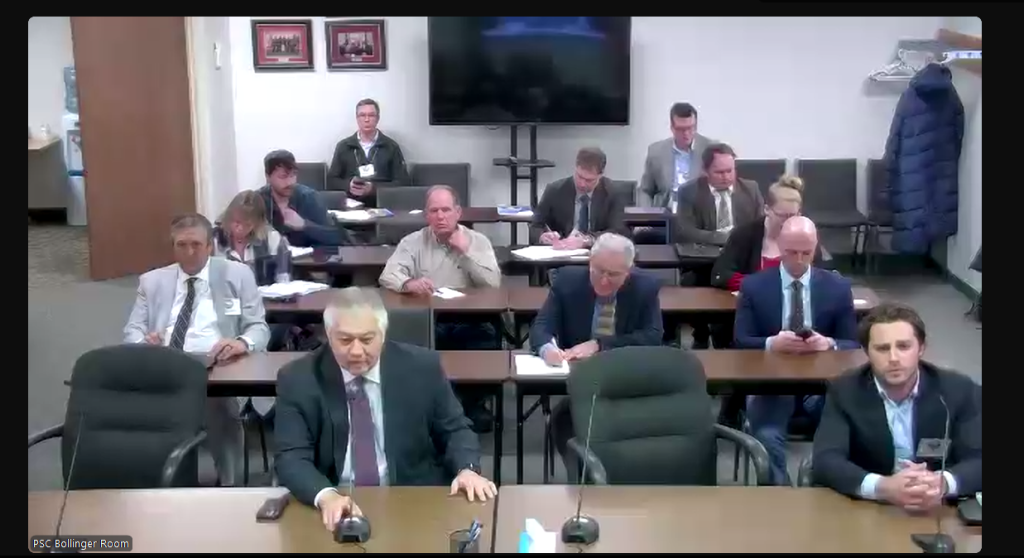Montana Public Service Commission public hearing: Composite Core Conductors to mitigate wildfire risks and increase grid resilience
The Montana Public Service Commission (PSC) is actively advocating for the adoption of advanced composite core conductors as a key solution to modernizing the state’s electrical grid and reducing wildfire risks. During a recent hearing, Epsilon Cable was invited by state regulators to discuss the benefits of replacing traditional steel-core conductors with new-generation composite core alternatives.
Addressing wildfire risks and grid resilience
One of the primary concerns raised during the hearing was the increasing frequency and intensity of wildfires, a significant portion of which have been linked to power lines. Traditional steel-core conductors such as ACSR and ACSS are prone to sagging under high temperatures, increasing the likelihood of vegetation contact and potential ignition sources. In contrast, composite core conductors offer minimal sagging, significantly reducing fire hazards.
Commissioner Pinocci and various speakers emphasized that wildfire mitigation is not just an environmental and safety issue but also a financial one. The cost of wildfire damage—including power outages, infrastructure repairs, and liability claims—far exceeds the investment required to upgrade transmission lines with safer and more resilient materials.

Industry support for grid modernization efforts
Joseph Sylvia, from Epsilon Cable’s US team opened the hearing to introduce the advantages of composite core conductors and answer the Commissioners’ questions, and several other industry professionals jumped in to contribute with their knowledge and experience.
Case studies from both international and domestic projects highlighted that upgrading existing transmission lines with composite core conductors (also called reconductoring) is approximately 50% less expensive than constructing new infrastructure to achieve comparable performance. Additionally, the reconductoring process can be completed significantly faster—typically within 6 to 24 months—whereas building a new transmission line can take close to a decade.
Wildfire risk mitigation was discussed in detail, to explain how composite core conductors not only reduce ignition risks in many scenarios, but also how they offer superior resilience and act as shock-absorber in the system in case of wildfire, by maintaining their integrity to prevent service interruptions and enable faster service restoration, and by being able to absorb additional ampacity redirected from other powerlines.
Regulatory considerations and next steps
Utilities operating in Montana have expressed cautious optimism regarding the transition to this technology.
It was highlighted that electric utilities in the US are overly conservative, which is hempering the adoption of needed advanced transmission technologies such as HVCRC® and other composite core conductors. In the past 20 years, hundreds of thousands of kilometers of composite core conductors have been installed worldwide, and they are now a well proven solution with a large rate of adoption.
While the procurement costs of composite core conductors are higher than traditional options, overall project costs are in fact much lower than traditional conductors, and long-term savings in maintenance, energy efficiency, and fire prevention could justify the investment.
The PSC hearing therefore underscored the need for proactive regulatory measures to support the adoption of composite core conductors. Commissioners discussed potential policy incentives, funding mechanisms, and partnerships with federal agencies to accelerate grid modernization efforts.
A key takeaway from the hearing was the importance of collaboration between state regulators, utilities, and technology providers. The PSC plans to continue engaging with stakeholders to develop a comprehensive strategy for implementing advanced conductor technology across Montana’s power infrastructure.
As the state faces increasing pressure to enhance grid reliability and mitigate wildfire risks, the Montana PSC’s push for composite core conductors signals a critical step toward a more resilient and sustainable energy future. Further discussions and pilot programs will likely shape the next phase of this transition, ensuring that Montana’s electrical grid can meet both current and future demands.
Watch the replay of this Montana PSC hearing: https://www.youtube.com/live/RKVe6IQj5vM?si=AySk7g8NSkqEXMO1&t=293
